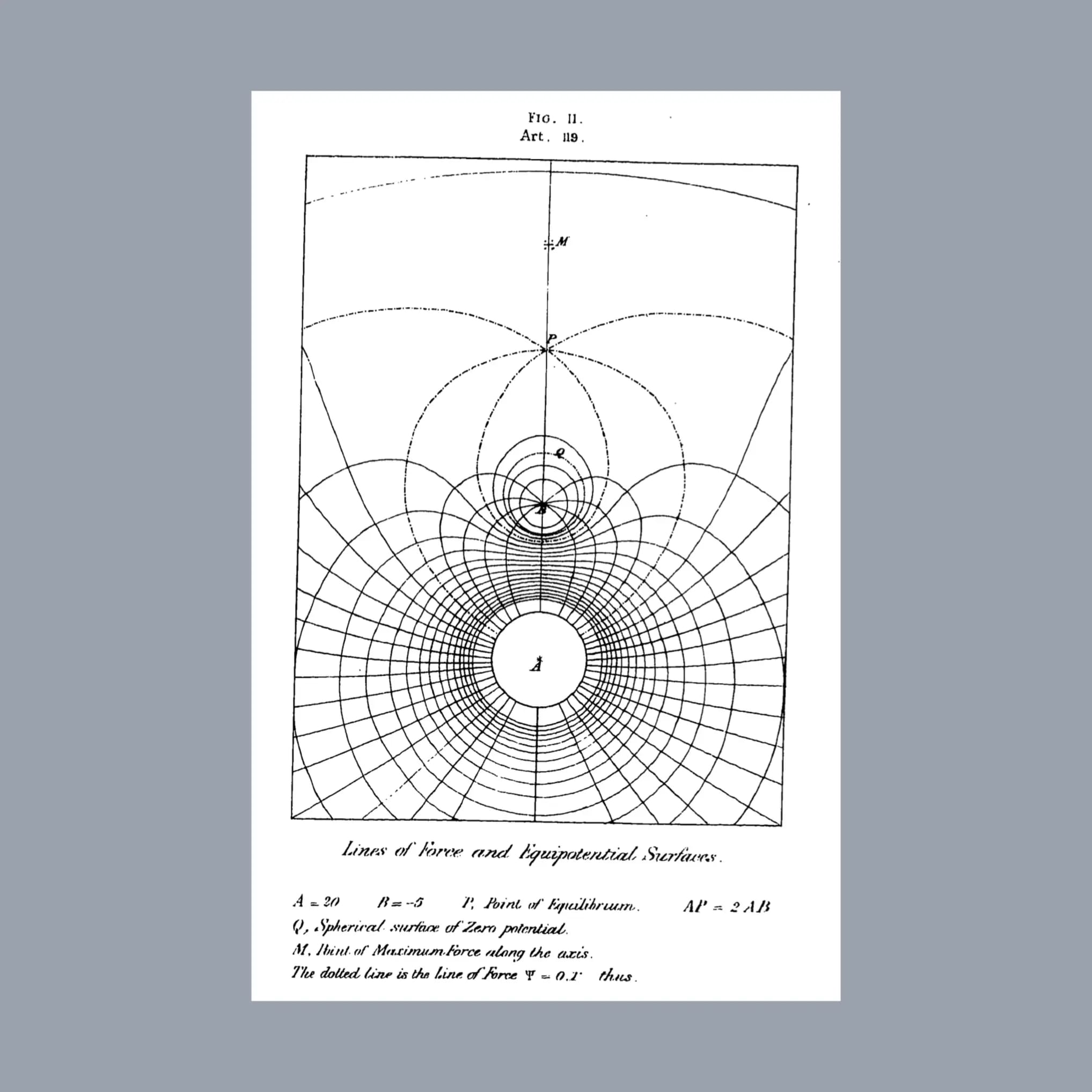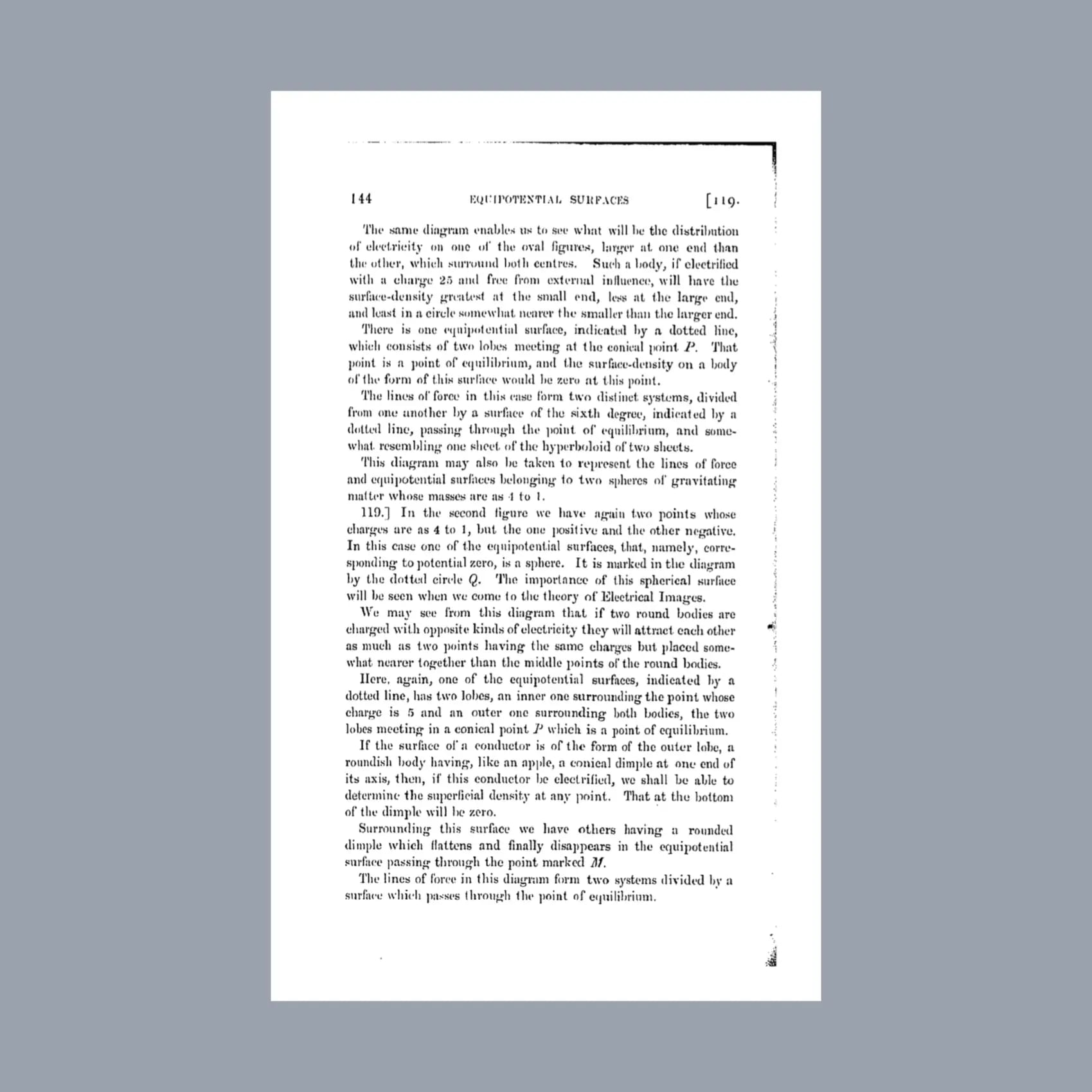









Maxwell’s deep respect for Faraday’s visionary contributions to science, which laid the groundwork for his own revolutionary achievements, is evident. An example is the passage below, where Maxwell advances his own theory of light as an electromagnetic phenomenon. Note how he takes care to acknowledge the pioneering insights of Michael Faraday. Faraday had proposed, in his Thoughts on Ray Vibrations (published in Philosophical Magazine, May 1846, and later included in Experimental Researches, vol. III, p. 447), the foundational idea that light is a transverse disturbance in the electromagnetic field. Maxwell honors Faraday’s priority in conceptualizing this profound link between light and electromagnetic phenomena, even though the tools for calculating the velocity of light’s propagation were unavailable in Faraday’s time.
James Clerk MaxwellA Dynamical Theory of the Electromagnetic Field
This velocity is so nearly that of light, that it seems we have strong reason to conclude that light itself (including radiant heat, and other radiations if any) is an electromagnetic disturbance in the form of waves propagated through the electromagnetic field according to electromagnetic laws.
[…] The conception of the propagation of transverse magnetic disturbances to the exclusion of normal ones is distinctly set forth by Professor Faraday in his "Thoughts on Ray Vibrations." The electromagnetic theory of light, as proposed by him, is the same in substance as that which I have begun to develope in this paper, except that in 1846 there were no data to calculate the velocity of propagation.
Download the image and order a Giclée print from the printing service of your choice.
High resolution image at 300 dpi
Up to A3 paper size
PNG format with embedded Adobe RGB 1998 color profile
Share under Creative Commons Licence (CC BY-NC-ND 4.0)
Get the high-resolution image
Download